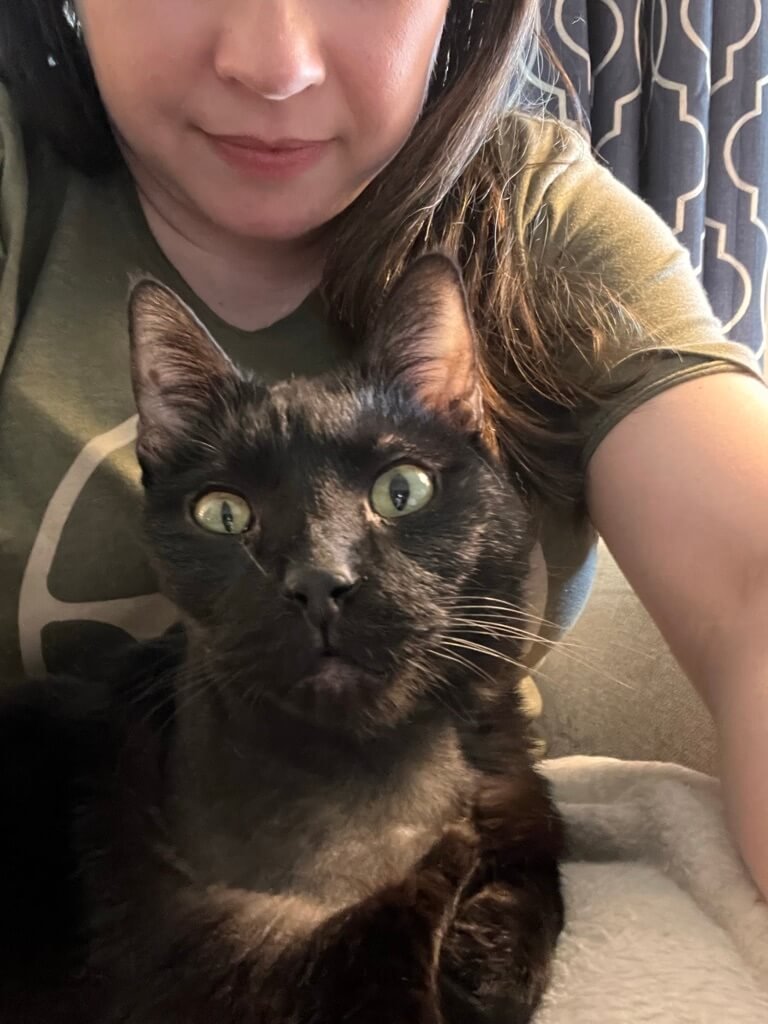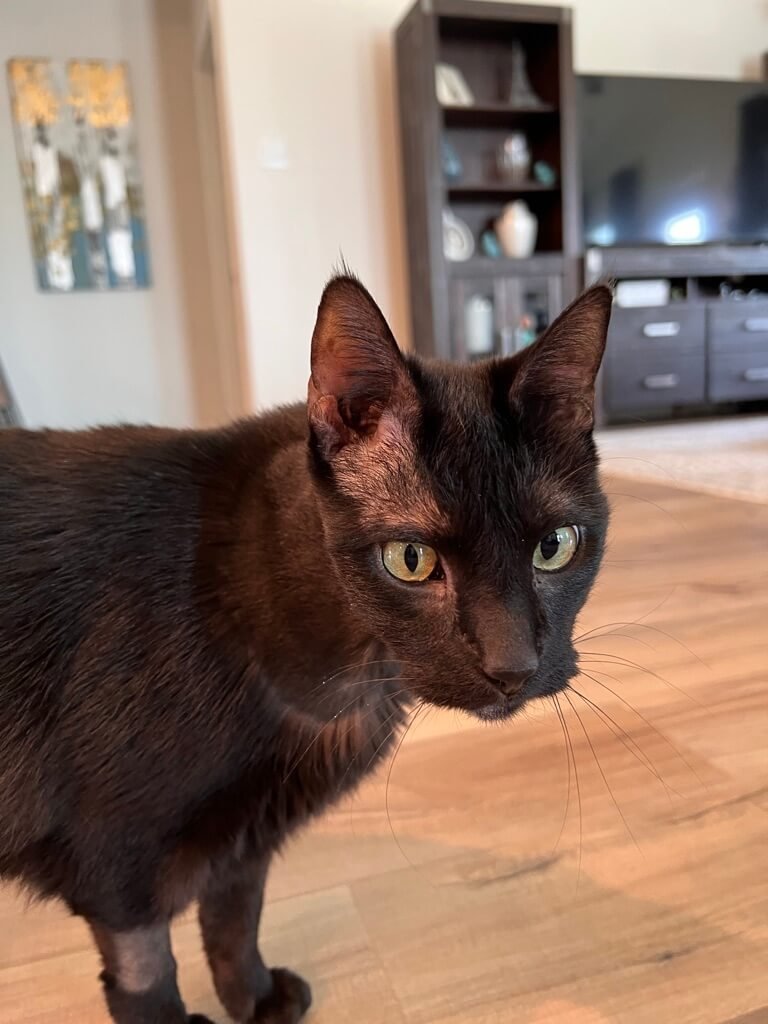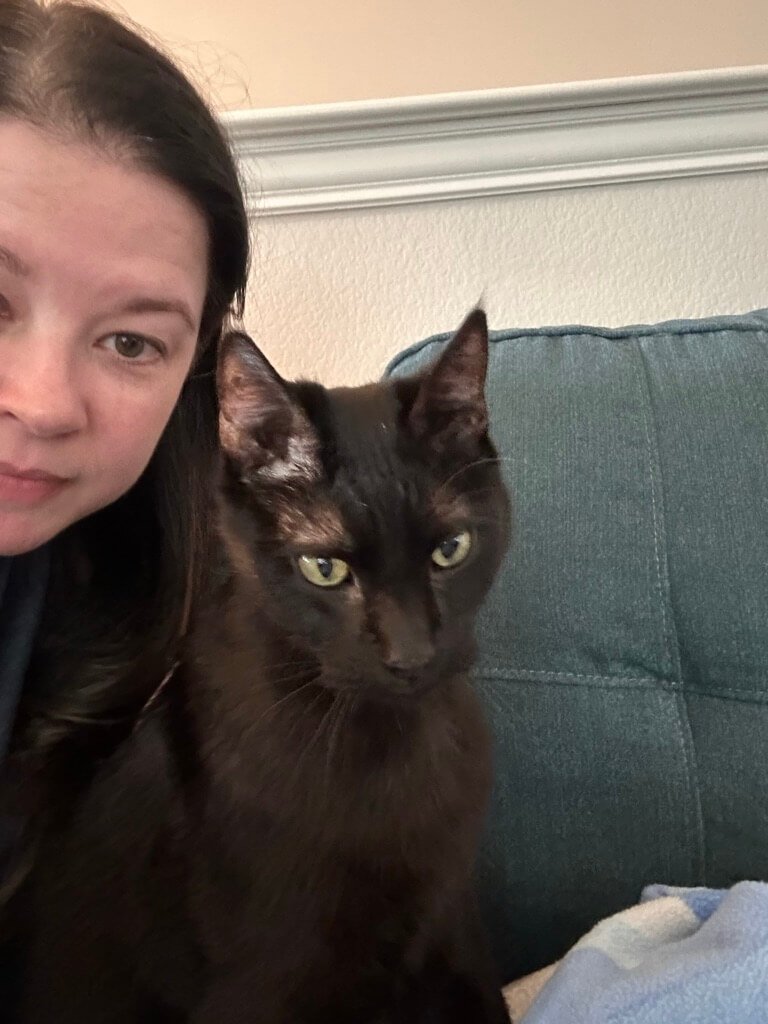When a pet has a medical procedure, I think we all turn to Dr. Google to try to understand what to expect. This was absolutely true when Flash had surgery to remove an ear polyp in 2023.
When your Flash Wasn’t feeling well
Flash started having an itchy ear in March 2023. By his doctor’s direction, we first treated it as an ear infection. When that didn’t resolve the itchiness, his doctor referred us to a dermatologist with the assumption that he had a polyp growing in his ear.
The dermatologist confirmed that Flash did have an ear polyp. She explained that she could try to remove it during an in-office procedure, but there was a 50/50 chance it would grow back. She also warned that the polyp could be cancerous, so it was necessary to have the polyp biopsied.
Thankfully, the polyp was not cancerous. But, it did grow back. This left us with no choice but to have the polyp removed surgically.
Surgery–Now What?
During the surgical consult, Flash’s surgeon explained the risks of this type of surgery, one of which was a type of facial paralysis called Horner’s Syndrome. Hopefully this condition would be temporary, but the surgeon made no guarantees.
Sure enough, Flash did have Horner’s Syndrome after his surgery. Admittedly, it was quite shocking to see his appearance after surgery. Shaved fur and stitches are scary enough! But to see your pet with additional disfigurement is heart breaking.
When I search Google to learn more about the syndrome, the information I found was limited. There weren’t a lot of stats talking about how often this condition resolved itself in cats, nor did I find much information on how to treat Horner’s Syndrome.
After Surgery
The post-op instructions we received explained the best thing we could do to treat Horner’s Syndrome was to prevent Flash’s eye from drying out by applying ointment directly to his eye four times per day.
With Horner’s Syndrome, the extent of facial paralysis can vary from patient to patient. This syndrome can have many effects. It can cause the third eye lid to be elevated, it can cause the eyeball to appear sunken into the eye socket, it can change the pupil size in the affected eye, and it can cause the facial muscles to be paralyzed, which can prevent the eye from closing fully or blinking effectively, in turn causing dry eye if not treated.
We were fortunate—Flash was able to fully close his eye fully, so we didn’t have the added concern of his eye drying out. We didn’t have to use the eye ointment for very long. Within a couple of weeks after his surgery, we started to see noticeable improvement in his appearance.
Recovery
It took about two months before his eye seemed mostly back to normal. Occasionally, I can still see a variance between the sizes of his pupils, but I’m sure no one else would notice at this point.









We are so thankful that Flash’s bout with Horner’s Syndrome resolved for the most part, but we fully realize that’s not the case with every pet. However, even if the syndrome had not resolved itself, I still wouldn’t have regretted him having the surgery because it improved his quality of life so much. A physical disfigurement would have been a small price to pay for his overall well being and health.


